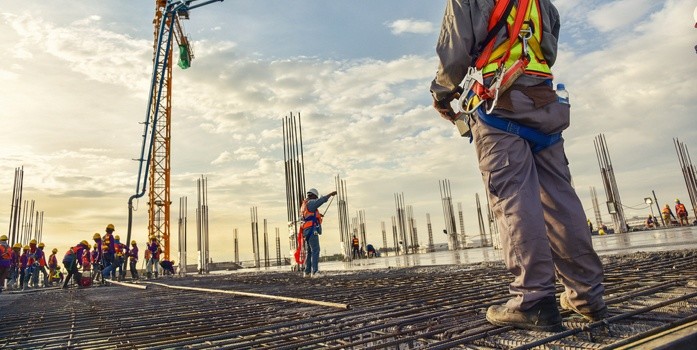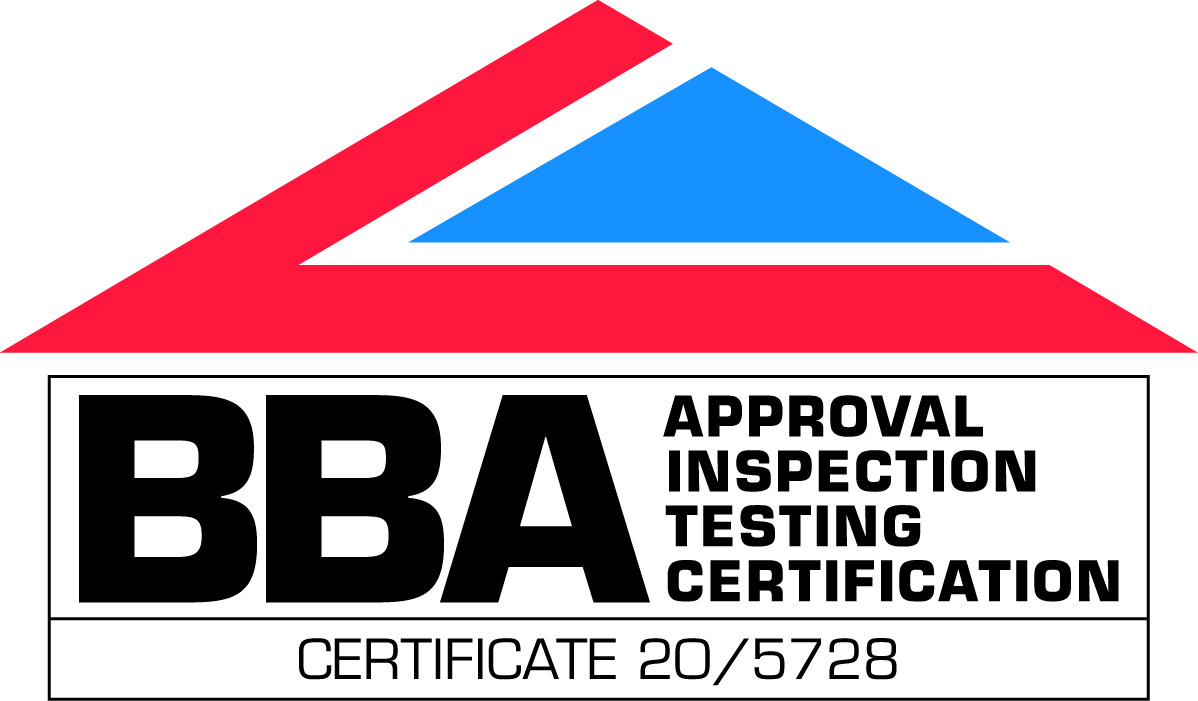Sustainable Development and Construction: Everything You Need to Know

If you work in any area of construction, you’ll be familiar with sustainable building practices. Sustainable construction is crucial if we want make developments work for ourselves, future generations and the environment.
Rapid population growth, economic development and a demand for more natural resources have put a strain on our planet. We must work hard to change the way we develop, maintain and dispose of our buildings.
Resources, land management, the environment and human development are all related. It’s vital we manage them better than we have been doing, so we don’t make current problems worse.
We need to ensure the construction industry meets the needs of the current population while preserving the needs of future generations. As one of the biggest consumers of natural resources, the construction industry has a big part to play in sustainable development.
While the three pillars of sustainable development can apply to any business or industry, and we all have some responsibility in preserving the planet. However, we’re going to talk about it from a construction perspective.
What Is Sustainable Development?

Sustainable development is defined as:
‘economic development that is conducted without depletion of natural resources’.
While sustainability refers to the practice of preserving and replacing natural resources so we don’t damage the planet, sustainable development relates to our ability to do this in relation to the social, political, environmental and economic concerns faced by the human race.
For example, solar energy is a type of sustainable development that will help preserve and protect the planet’s natural resources.
Installing solar panels on construction projects will either reduce electricity bills or cut them out – so we can reduce our carbon footprint.
However, installing solar panels on every roof in the UK is unrealistic, never mind the world. Also, panels last for 25-30 years, so we would have to consider replacement strategies.
What Are the Three Pillars of Sustainability?

Sustainable development isn’t just dependent on the environment; there are other factors which contribute to a project being ‘sustainable’.
Media coverage and science tend to focus on the environmental aspect because it’s in the public interest. Still, economic factors and social factors all contribute to creating a harmonious ‘triple bottom line’.
For example, if we build new hospitals with the environment in mind but slow down patient treatment times, there will be evident social and economic problems. This harmonious bottom line is difficult to achieve, but it is achievable.

The environmental pillar relates to two things, the ecological impact of the materials used in the construction process and the impact on the surrounding habitat.
With the environmental aspect now in the spotlight, there’s more pressure on developers to build ethically. When procuring a construction firm for an environmentally-friendly build, it’s important to be transparent.
Some construction firms will use an environmental management plan and schedule environmental risk assessments to ensure all materials are compliant.

It’s still unclear what the social benefits of sustainable development are. But we can categorise them into equity, awareness, and participation.
Equity – refers to the accessibility and distribution of goods. For example, a ten-bedroom mansion with one person living in it may be built from sustainable materials, but the social benefits of the building are limited.
Awareness – if we can’t change perceptions of what sustainable practices are, we won’t be able to achieve a sustainable future. Stakeholders have to ‘buy-in’.
Participation – if our buildings are to become more sustainable, we need to include the social groups that represent them – for example, the trade unions of hospitals workers and the workers themselves.

The economic pillar is what makes developers come on board with sustainable projects, providing they are profitable. Buildings that aren’t sustainable don’t make any profit and are unusable. Investable builds are those that create employment (whether that’s during or after the build) and provide the local area with some sort of gain.
8 Types of Sustainable Development

- Wind Energy – wind can turn into electricity via wind turbines, which provide power to homes, schools and other commercial buildings. We now have access to smaller wind turbines which can be installed at a property.
- Solar Energy – sun energy is available in vast amounts in most parts of the world, and soaking up this energy with solar panels allows us to supplement or replace grid power without using traditional methods.
- Sustainable Construction – developing buildings such as houses, offices and other commercial properties that incorporate and use renewable and recyclable resources, with the primary goal of lessening the impact on the environment.
- Crop Rotation – a chemical-free way of maximising the growth potential of gardening land which benefits gardeners and commercial farmers.
- Water Conservation – to conserve water we need to adopt more sustainable practices such as efficient water fixtures like toilets, taps and showerheads.
- Green Space – even in large metropolitan areas, we require green spaces as they encourage wildlife and maintain a healthy ecosystem. Architects are incorporating green spaces into residential developments and commercial developments.
- Sustainable Forestry – tearing forest down for materials like timber isn’t good for the environment. Look for companies that replace trees they plant or look for recycled materials if you want to go one better.
- Hydropower – both environmentally-friendly and sustainable as it doesn’t produce any air pollution or reduce toxins into the water, meaning fish can pass through freely. Communities powered by hydropower enjoy cleaner air and water.
As we can see here, there are plenty of sustainable development practices that affect construction, and vice versa, so it’s important to consider every aspect in our quest for sustainability.
What Is Sustainable Construction?
Sustainable construction aims to apply the principles of sustainable development to the construction industry. It involved developing buildings and structures that:
- Maximise the use of sustainable resources while causing less pollution and waste.
- Improve the quality of life of the people in the structure.
- Offer flexibility and allow for future changes.
- Support natural environments and habitats.
- Deliver profit!
If you want to deliver projects to this standard, you need to ensure they’re a consideration from the project’s inception. We judge a building’s impact long after it’s construction, so you need to cover all these factors from draft to usage to demolition.
How Does Construction Affect the Environment?

Construction has a significant impact on the environment because built-up areas of the UK require a lot of materials and these environments are dependent on natural resources such as water.
The construction industry consumes around 6 tonnes of materials per year for every person living in the UK.
Many traditional practices are outdated, but owners fear for their profits. They don’t want to change from a tried and tested method – especially if the methods increase profits. Typically, progress has been slower than in other industries that embrace innovation.
While environmental awareness is improving, the construction industry needs to shake off the reputation of being slow to adapt.
Environmental Benefits of Sustainable Construction
- Lower environmental impact from using products and processes which are more environmentally-friendly
- Takes the lifetime of a building into consideration, instead of the construction phase.
- Maintains and improves the natural environment instead of damaging it.
Economic Benefits of Sustainable Construction
- Sustainable construction can bring cost savings (e.g. energy bills).
- Consideration of the lifespan of a building can help bring cost savings by considering sustainable tech etc.
- If buildings are appropriately planned and designed, the cost is no more expensive than standard builds.
- Encourage economic prosperity due to better living and working conditions.
Social Benefits of Sustainable Construction
- Creates healthier working environments.
- Can help improve areas of well-being which can have a knock-on effect on health and education.
- Prevent high crimes rates and help to solve other social issues.
What Areas of the Construction Industry are Affected By Sustainable Development?

Construction professionals should be aware of the broader implications of a building project; it shouldn’t be about getting a building up as quickly as possible.
Sustainable development affects different areas of construction, such as energy, technology, manufacturing and transport.
Energy
Clean energy is sustainable and produces far less pollution than fossil fuels. If we want to become more sustainable, we need to increase the amount of clean energy we use and reduce the amount of fossil fuels we use.
From an architect’s point of view, this all starts with energy-efficient design: making the most of natural light, smart windows and HVAC systems. From a site manager’s point of view, this could mean sourcing low-impact materials like timber, clay and stone.
Technology
Technology also affects our ability to become sustainable and green construction technology is becoming a trend in the industry. The benefits are plenty, and we can use these methods on new and old buildings.
For example, commercial buildings are often empty 30-40% of the time. By using green technologies like motion sensors and access card readers, we know when part of a building is unoccupied and can adjust HVAC systems and power down unused facilities, so they use less energy.
Manufacturing
The type of materials we buy can determine what sort of impact we’re having on the environment. Buying unsustainable materials from an unsustainable manufacturer won’t get us any closer to becoming sustainable.
Some of the benefits of responsible sourcing include:
- Improve operational efficiency by reducing costs and waste.
- Reach new customers and develop a competitive advantage.
- Protect and strengthen brand reputation and build public trust.
- Build long-term business viability and success.
- Work within regulations.
Transport

Transport has a significant impact on greenhouse gas emissions:
”Transport accounted for about 23% of global carbon dioxide emissions in 2010 and 27% of end-use energy emissions with urban transport accounting for about 40% of end-use energy consumption”.
World Health Organisation
Construction professionals should consider the impact transport has on the environment and make considered choices. This could relate to employee transport, personal transport, supplier transport or fleet management.
A commitment to improving transport sustainability will reduce the company’s direct or indirect contribution to carbon emissions, make the company follow regulations and save in the long-term (if you manage a fleet).
Why Is Sustainable Construction Important?

Corporate Social Responsibility
Businesses must consider the interests of communities and the environment that they operate in, which is more than ‘working within regulations’.
Businesses shouldn’t base their decisions solely on profit; there are other factors that come into play, such as social and environmental.
Because the construction industry operates on such a large scale, CSR is particularly important, as investors will often take a company’s CSR report into account before investing.
An investor is more likely to consider a project if it has a long-term impact on the community and the environment.
Complying With Regulations
While CSR is essential, so is meeting regulations. The concern with environmental issues means there are likely to be more laws in the future. This puts enormous pressure on the construction industry to comply, and you should take potential regulations seriously.
If the industry can predict changes, it becomes easier to adapt, and it’s better to comply than to avoid compliance as the costs are usually much greater.
Sustainable Credentials Generate More Business
Before, it was only a few select individuals (mainly academics) than understood the impact humans are having on the environment. The media coverage has created more awareness, and now businesses have to be more conscious.
Some companies promote themselves on their commitment to reducing their carbon footprint or planting trees, which extends to companies that provide fossil fuels such as petroleum producers.
If you’re leading the pack, you’re the innovator and are more likely to get people on board with your ideas. Buyers are more concerned with the sustainability of the products they’re buying now. However, you need to ensure you aren’t greenwashing.
Greenwashing and Sustainable Construction

Unfortunately, there’s a lot of misinformation when it comes to sustainable materials. Some of this will be deliberate, and some of it will be down to a lack of education or inadequate testing.
Companies want to sell products, and they aren’t going to tell you what makes them unsustainable. Many ‘sustainable’ materials often come with pitfalls, so it’s important to be aware of this.
You don’t want to go around making claims your builds are sustainable when, in fact, the suppliers you’ve been using were misleading you. It could end up damaging your reputation.
For example, the Antilla Tower in Mumbai has gained a lot of negative press for meeting the LEED criteria for a sustainable building when the 27-storey building houses one family.
To add to that, billionaire owner Mukesh Ambani’s company Reliance funded the building, who make their money through unsustainable practices like petroleum production.
Here’s what to look out for:
- Token green products – a company claims to be sustainable because of one product.
- Imagery – including green on product or marketing imagery like trees or water.
- Misleading claims – stating a product is recyclable when, in fact, a low percentage is being recycled due to technical complications.
- Vague claims – ‘made honestly’, what does ‘honestly’ mean? The word is too ambiguous, and it isn’t backed by evidence to substantiate it.
- Poor standards – a company claims to adhere to industry standards, but the industry’s self-regulating body created the rules.
There are plenty of questions you need to ask when it comes to buying sustainable products, and if companies can’t answer them you should approach with caution.
How Do We Measure Sustainable Construction?

Aiming to meet the criteria for the three pillars of sustainability is difficult, especially if there is no way to measure it.
Construction companies now have to provide performance information so their environmental record can be judged. There are numerous tools, and methods companies can use to do this.
Long Term Costs & Value
Life Cycle Analysis
Now part of the ISO 14000 standards, life cycle analysis is ideal for building projects that require a lot of materials. It considers material and energy inputs and extraction of raw materials through production to use, reuse, recycling and disposal. Everything must be accounted for.
Whole Life Costing (WLC)
Whole life costing aims to consider all the economic, social and environmental costs of the project from design to disposal. However, WLC is tricky because it’s a challenge to anticipate the cost of running a building until it’s operational. Social and environmental costs are tricky to quantify, and a lot of emphases usually ends up on economic costs.
Environmental Assessment Methodologies

Carbon Footprints
Carbon footprinting calculates the amount of environmental damage caused by an individual, household or business through harmful emissions. Demonstrating a commitment to reducing carbon emissions is a good business practice, as the construction industry emits so much of the greenhouse gas.
BRE Methodologies
The Building Research Establishment and the UK government have developed tools to help developers create sustainable buildings.
The BREEAM (Building Research Establishment Environmental Assessment Methods) collection of assessment methods help construction professionals reduce the environmental impacts of the developments they build, which covers schools, prisons, courts, offices, retail and industrial developments.
Various tools support different versions of BREEAM, such as LCA (certified system for life cycle analysis), ENVEST (web-based tool for designing buildings with low environmental impact), Smartwaste (waste management) and BREEAM: Developments (targeting and benchmarking).
The Code for Sustainable Homes
The Code for Sustainable Homes is a national standard by which we measure the environmental impact of our homes and encourage the implementation of more stringent standards. Homes get a star rating from 1 to 6, and it’s benchmarking document by which we can improve.
Benchmarking & KPIs

Benchmarking
Evaluating processes to ensure future builds are more sustainable. The process can be a one-off, but it’s better if they’re done over time. As we gather more information,, the benchmarking process will become more robust.
KPIs
Measurement of factors that are critical to success, such as complaints, incidents and accidents, waste generation and cost vs budget.
Environmental Management Systems (EMSs)

ISO 14000 Standards
The International Organisation for Standardisation set standards that often become law through treaties or nationally-based initiatives. The government introduced ISO 14000 in 1992 to help organisations minimise their effect on the environment. They make it easier to follow and comply with laws. The laws are standardised and any organisation can use them.
EMAS – Eco-Management and Audit Scheme
EMAS is a voluntary scheme which is designed to improve an organisation’s environmental performance. It aims to recognise initiatives which go beyond the minimum requirement and a continued commitment to environmental performance. The scheme is back by the UK government and the integration of ISO 4001.
Post Occupancy Evaluation
One of the main issues with new developments is that they often don’t consider environmental impact after a build. While predictions are made before a project commences, predictions often don’t live up to expectations. Therefore, it’s vital to schedule post-build evaluations.
This will involve finding out how users are finding the building: how it suits their needs, and improvements for design and performance. Organisations can use this feedback to shape requirements for future developments.
POE can contribute to sustainable practices by finding more efficient ways to build and develop features, maximise lifetime and cut cost savings.
Are You a Sustainable Developer?
When you read this blog, we imagine you saw some ways you could improve your building process, one of the main ways you can do this is by using sustainable connections. This means using other companies that are sustainable and altering your practices.
Let’s face it, the process is holistic, and there are many different stakeholders to appease, but working with the right people will get your on the right track.




